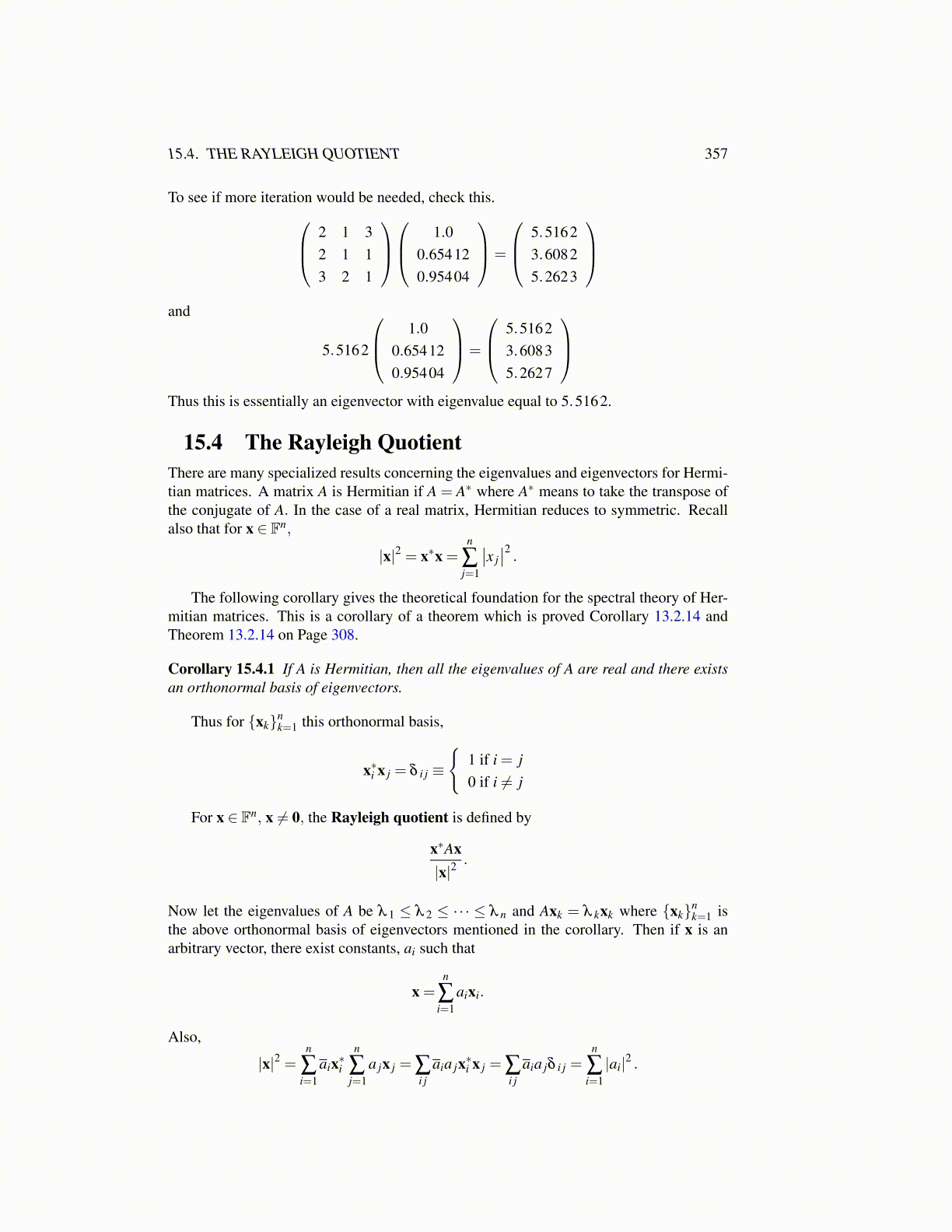
15.4. THE RAYLEIGH QUOTIENT 357
To see if more iteration would be needed, check this. 2 1 32 1 13 2 1
1.0
0.654120.95404
=
5.51623.60825.2623
and
5.5162
1.00.654120.95404
=
5.51623.60835.2627
Thus this is essentially an eigenvector with eigenvalue equal to 5.5162.
15.4 The Rayleigh QuotientThere are many specialized results concerning the eigenvalues and eigenvectors for Hermi-tian matrices. A matrix A is Hermitian if A = A∗ where A∗ means to take the transpose ofthe conjugate of A. In the case of a real matrix, Hermitian reduces to symmetric. Recallalso that for x ∈ Fn,
|x|2 = x∗x =n
∑j=1
∣∣x j∣∣2 .
The following corollary gives the theoretical foundation for the spectral theory of Her-mitian matrices. This is a corollary of a theorem which is proved Corollary 13.2.14 andTheorem 13.2.14 on Page 308.
Corollary 15.4.1 If A is Hermitian, then all the eigenvalues of A are real and there existsan orthonormal basis of eigenvectors.
Thus for {xk}nk=1 this orthonormal basis,
x∗i x j = δ i j ≡
{1 if i = j0 if i ̸= j
For x ∈ Fn, x ̸= 0, the Rayleigh quotient is defined by
x∗Ax|x|2
.
Now let the eigenvalues of A be λ 1 ≤ λ 2 ≤ ·· · ≤ λ n and Axk = λ kxk where {xk}nk=1 is
the above orthonormal basis of eigenvectors mentioned in the corollary. Then if x is anarbitrary vector, there exist constants, ai such that
x =n
∑i=1
aixi.
Also,
|x|2 =n
∑i=1
aix∗in
∑j=1
a jx j = ∑i j
aia jx∗i x j = ∑i j
aia jδ i j =n
∑i=1|ai|2 .